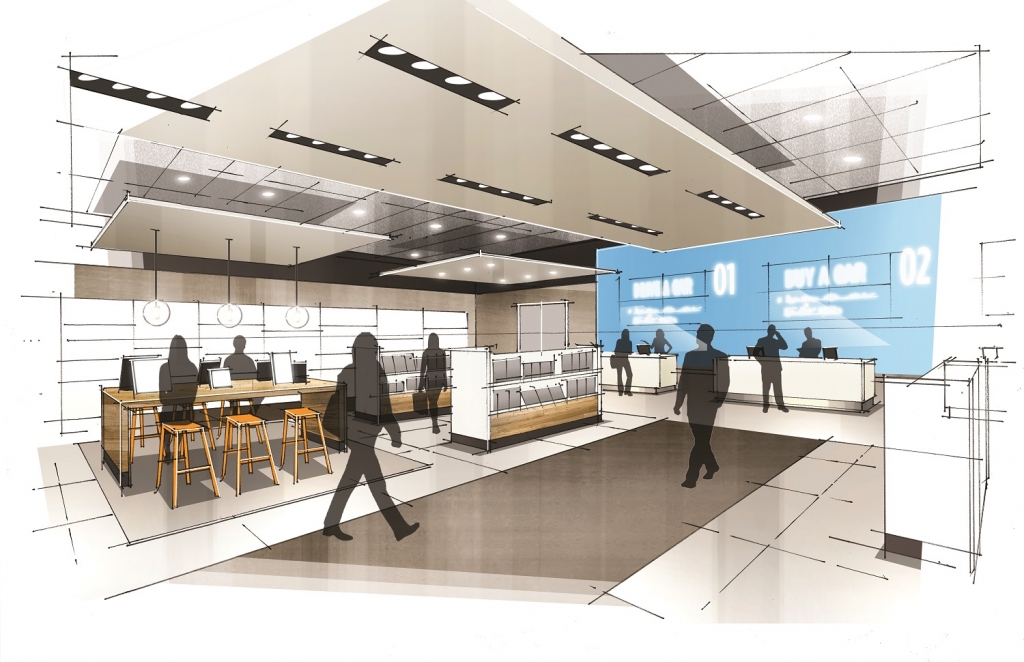For the past several years, retailers have been closing more stores than they’re opening. Many have filed bankruptcy and are teetering on the edge of extinction. If this is coming as a shock, you haven’t been paying attention.
The root of this problem lies in the old ways of gaining consumer loyalty – they don’t work anymore. But retailers either aren’t evolving or aren’t evolving fast enough to keep up with the needs and expectations of one of the largest populations in history, what we call the “digital native audience,” or the DNA.
The DNA is an entirely new group of shoppers – the group for whom experience, mediated by technology, has always been a fact of life. To put it in familiar terms, this group consists of those known ambiguously as Gen Y, Gen Z, millennials and iGen. This population’s basic understanding of the world, and its very identity, have evolved in a digitally connected planet.
In two recent original research studies conducted by design firm WD Partners (Dublin, Ohio), “The One-Click Store of the Future” and “The DNA of the Digital Native Audience,” we see just how deep the chasm is between the DNA and past generations (baby boomers and Gen Xers or, as we call them, digital immigrants). Digital immigrants witnessed the explosion of information technology as adults, after their habits and temperaments were already or mostly formed.
In these studies, more than 1500 consumers were surveyed about their preferences for various checkout concepts – some were familiar or modestly innovative; others bordered on sci-fi. The results speak volumes for the pending disruption to traditional retail models, especially when looking at the disparity between digital natives and digital immigrants.

Courtesy of WD Partners, Dublin, Ohio
Advertisement
FRUSTRATION WITH TRADITION
Put bluntly, the old single-line, single-register model of checkout is hated across many demographics. In the quantitative phase of research, only 25 percent of respondents found this approach appealing, ranking it last among checkout choices. Research respondents complained of slow, inefficient and even hostile checkout experiences, where coupons, returns and other service issues stall lines. In consumer experience, the “personal touch” of this option is a theoretical benefit rarely encountered in actuality.
Digging deeper during the qualitative phase, researchers uncovered a contempt for the multiple-line, multiple-register checkout model, as well. The sight of unstaffed registers and the phenomenon of “lane regret” – the belief that you somehow always choose the slowest-moving line – mar the possibility of a positive customer experience. Younger shoppers express the greatest dissatisfaction with this format, calling the staggered version of these checkouts at big-box retailers particularly confusing or frustrating.

Courtesy of WD Partners, Dublin, Ohio
SHOWROOMS: THE STORES OF THE FUTURE?
One of the interesting takeaways from the research was the acceptance and appeal of a showroom store, defined as purely a space for showcasing product or hosting experiences, removing the pressure of a sale. Digital natives showed twice as much interest in this format compared to digital immigrants (56 percent and 28 percent, respectively), and the purchase intent for these two populations was nearly the same. With these shifts in consumer shopping behavior and expectations, new spaces and valuable in-store real estate are at last being freed for reinvention and innovation. Ending the dominance of old-school checkout options makes room for a more emotionally satisfying shopping experience. It is a revolution in store spaces and square-foot utilization.
THINK LIKE THE ‘DNA’
Brands must have more than a mere familiarity with technology. It’s not a question of accommodation or implementation of the newest gadgets. It’s more than an evolution in the fundamentals of identity formation and social interaction, it’s a revolution in the very essence of identity. The desire for dynamism is rooted in an existential shift, one brands cannot ignore if they want to connect with these digital natives. The advancement of technology hasn’t just changed the way people shop, but rather, it’s changed the way they form their identities and navigate their worlds. How digital immigrants and the DNA behave, how they think, and what they want from brands will never be the same.

Courtesy of WD Partners, Dublin, Ohio
Advertisement
REINVENTING THE STORE
The DNA has been raised in the era of the Internet and smartphones, and they shop and think differently than previous generations. These consumers are automatically importing expectations nursed and nurtured online into all aspects of their lives, including retail stores, and this influence will only grow. The expectation of retailers is for them to embrace innovation to end the hassles and wasted time of the traditional checkout model.
Younger consumers have not abandoned physical stores exclusively for online retailers, but they have embraced innovation there. This is not merely a shallow craving for novelty, it reflects a fundamental change in orientation and expectation, and these young people are ready to reward those brands that meet them where they live. For an older population, there can be some challenge in understanding the desire for and acceptance of change. For those raised with the unendingly iterative improvements and offerings of the iPhone, for example, innovation is a given and a positive in and of itself.
Stores that want to stay relevant to the DNA must innovate now. If you are just starting to develop a “store of the future” concept or a plan to attract this new generation of consumers, you may already be too late. Your customer base wants innovation and still loves to shop, even if they are online shoppers and Amazon Prime members. These are shoppers who want to shop on their own terms. While these terms might not be negotiable, the DNA is ready to prove loyalty to stores that fit into their lifestyle and help them amplify and express their identity in a digital world.
Lee Peterson is executive vp, brand, strategy and design for Dublin, Ohio-based design firm WD Partners. This year, Lee presented the firm's exclusive consumer study results at VMSD's International Retail Design Conference (IRDC) in his session, “The DNA of the Digital Native Audience.”


 Photo Gallery1 week ago
Photo Gallery1 week ago
 Headlines1 week ago
Headlines1 week ago
 Headlines2 days ago
Headlines2 days ago
 Headlines1 week ago
Headlines1 week ago
 Headlines1 week ago
Headlines1 week ago
 Designer Dozen2 weeks ago
Designer Dozen2 weeks ago
 Designer Dozen6 days ago
Designer Dozen6 days ago
 Headlines1 week ago
Headlines1 week ago




















